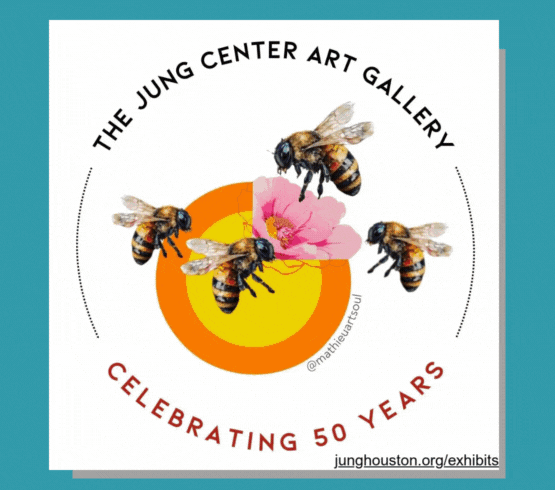What constitutes meaning? It’s not a simple question, and it’s one that has captured the imagination of artists, philosophers, and scholars alike for millennia.
Born in California, De Maria lived and worked in New York beginning in the 1960s. Perhaps best known for his Land art work such as The Lightning Field (1977) and sculptural installations like The New York Earth Room (1977) and The Broken Kilometer (1979), the artist also participated in happenings and experimented with film and music. (Some readers may be surprised to learn that he was an early band member of The Velvet Underground.)
As a prolific and influential artist, De Maria’s work has been the subject of seven major solo museum exhibitions in Europe, but his first solo museum exhibition in the United States, Walter De Maria: Trilogies, also at the Menil, didn’t happen until 2011. Following the artist’s death, the Menil worked closely with his estate to identify and acquire more than 30 of his early sculptures. Not long thereafter, the Menil acquired just fewer than 600 of his works on paper from the estate.
The exhibition adds a new dimension to De Maria’s oeuvre and helps the public understand works that are well-known and loved, like the aforementioned The Lightning Field, with even greater depth. For example, in 1961, when De Maria starts making the eponymous boxes, it’s during a bit of an abstract expressionist hangover moment, ala Alan Kaprow’s happenings. De Maria’s two boxes, and the quantifiable “things” that they contain, invite a contemplation about our actions, when and why we do what we do, and how they may or may not be meaningless. Whether or not any of this matters, to whom and to what extent, is up to us entirely. To further expand ideas of space and time and involve the audience in the construction of meaning, White has included De Maria’s 1960 manifesto of sorts (he is known for resisting interpretations of his work), installed adjacent to the piece, which helps viewers understand how these boxes articulate the artist’s philosophies about art and participation.
Other works on view include Ocean Bed, which represents De Maria’s interest in sound, amplifying his belief in the viewer’s agency and art as experience. The piece hasn’t been shown or reconstructed since a 1969 presentation at the Stedelijk in Amsterdam as part of the exhibition op Losse Shroven. For Boxes for Meaningless Work, the Menil worked closely with the estate to make an exhibition copy, creating a moment in the show where you, dear reader, can participate: lie down on a pink mattress, in front of a steel headboard, and listen to the sound of two oceans, one on either side of your head. Ocean Bed is a key moment in the show that offers more dynamic, expansive ways of thinking about the audience. Questions, curiosities, and musings are sure to abound.

1 ⁄8
Walter De Maria, The Statement Series: Blue Painting / YES PEACE YES, 2011. Acrylic on canvas with stainless steel plate, 82 3/4 × 168 in. (210.2 × 426.7 cm). The Menil Collection, Houston, Purchased with funds provided by the Mary Kathryn Lynch Kurtz Charitable Lead Trust. © The Estate of Walter De Maria. Photo: Paul Hester

2 ⁄8
Walter De Maria, The Statement Series: Red Painting / NO WAR NO, 2011. Acrylic on canvas with stainless steel plate. 82 3/4 × 168 in. (210.2 × 426.7 cm). The Menil Collection, Houston, Purchased with funds provided by the Mary Kathryn Lynch Kurtz Charitable Lead Trust. © The Estate of Walter De Maria. Photo: Paul Hester

3 ⁄8
Walter De Maria, The Arch, 1964. Plywood, dimensions variable. The Menil Collection, Houston. © The Estate of Walter De Maria. Photo: Paul Hester

4 ⁄8
Walter De Maria, Channel Series: Triangle, Circle, Square, 1972. Stainless steel, dimensions variable. The Menil Collection, Houston. © The Estate of Walter De Maria. Photo: Paul Hester

5 ⁄8
Walter De Maria, Man on the Moon Painting, 1961. Oil on canvas, 36 × 36 in. (91.4 × 91.4 cm). The Menil Collection, Houston. © The Estate of Walter De Maria. Photo: Robert McKeever, courtesy Gagosian

6 ⁄8
Walter De Maria, Statue of John Cage, 1961, reconstructed 1984. Wood, 85 1/8 × 14 1/2 × 14 1/2 in. (216.2 × 36.7 × 36.8 cm). The Menil Collection, Houston. © The Estate of Walter De Maria. Photo: Paul Hester

7 ⁄8
Walter De Maria, Put One Box on Top of Another Box, Wait One Minute, Then Place the Top Box on the Floor, 1961. Oil on canvas, wood, and paint, dimensions variable. The Menil Collection, Houston. © The Estate of Walter De Maria. Photo: Robert McKeever, courtesy Gagosian

8 ⁄8
Photo of Walter De Maria with Ball Drop, 1961, in his Bond Street studio, New York, ca. 1963. Courtesy The Estate of Walter De Maria
“The opportunities to create new knowledge around DeMaria are so rich and exciting,” says White. “And we want to make sure that the community knows that we are open and excited to facilitate new understanding and new research out of what we have.”
—NANCY ZASTUDIL




